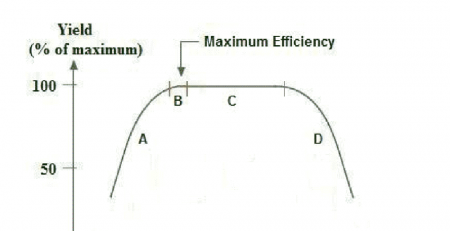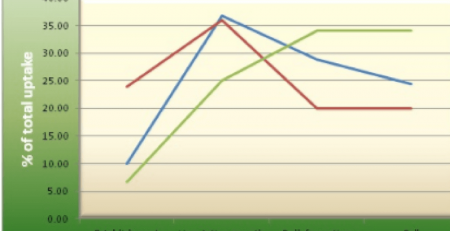How to increase the pH of the soil?
Many growers face a problem of low soil pH or growing media. Some soils are acidic due to nature, or in other cases low pH is a result of the prolonged and intense intensity of fertilizers and automatic irrigation and irrigation systems. solution to increase the pH of the soil.
A pH below 5.5 results in reduced yields and crop destruction. Under low soil pH, the availability of micronutrients such as manganese, aluminum and ions increases sharply and can lead to this micronutrient poisoning.
Conversely, low soil pH, other available nutrients like K (potassium), Ca (calcium), Mg (magnesium) decrease and this will lead to a deficiency of this substance.
For plants in the medium, the change in pH is much faster than increasing the pH of the soil. Although on many media there is a difference in background pH and starting pH. The effects of fertilizers and irrigation systems on soil pH can be enormous.
General causes of low pH
Before using ingredients to increase soil pH, make sure that the low pH is not caused by a fertilizer regimen. Often such adjustments as fertilizer regimes can increase the pH of the soil.
This is especially true for growing media: the ammonium / nitrate ratio is a major factor that can determine the pH of the media and it can be adjusted by applying the right fertilizer.
In soils, over-fertilizing along with fertilizers containing ammonium bases or fertilizers with the form of ammonium (urea nitrogen) can cause the soil’s pH to be lower.
Other factors that affect soil pH include:
The source material due to the soil texture has a low pH.
Rainfall – Soil in areas with heavy rainfall is more likely to form acid in areas with dry soil
Soil organic matter – soil organisms are continuing to break down soil organic matter. The end result of these activities is the release of H + and the soil becomes more acidic.
Indigenous vegetation – Indigenous vegetation whereby the pH of soils is also affected. Soils formed under vegetation are often more acidic.
Fertilizers – may be due to fertilizer materials containing many impurities, or H + increasing the acidity of the soil causing the soil pH to decrease. Therefore, imported fertilizers should be used to reduce impurities.
INCREASE THE SOIL pH BY USING LIME

In soil, the most common technique for increasing soil pH is the use of agricultural lime. The solubility of lime is relatively low. If agricultural lime is used to increase the pH of the soil surface, it will always affect the upper soil layer, but cannot go deeper than a few centimeters.
Therefore, to increase the pH of the entire root zone of lime, we can use clear lime water.
At inert media, lime can be incorporated into the growing medium and the process is always difficult. After new seedlings are treated, the use of lime is complex, because lime can only be used per basin or each crop. Back to that problem is due to the low solubility of lime, which cannot be used through drip irrigation.
INCREASE THE SOIL pH BY USING CARBONATE KALI

Unlike lime, potassium carbonate is more soluble and therefore can be used for drip irrigation. Because of its high solubility, potassium carbonate can easily be distributed throughout the root system along with irrigation and reaches the depth of the soil.
In both soil and substrate, the chemical reaction of potassium carbonate can be quick to counteract the root system, so raising the pH of the soil in the root is very easy.
The irrigation system has a low stable capacity (low bicacbonate content) so it must quickly reduce the pH at the substrate. In this case, and especially when using inert media, a drop in pH may present a constant problem.
Periodic or even frequent use of potassium carbonate, as part of the fertilization process, can prevent a drop in pH.
Potassium carbonate as a fertilizer.
Potassium carbonate also contributes to bringing potassium into the nutrient content of irrigation systems.
Therefore, potassium carbonate can be considered as a fertilizer and its K contribution is worth thinking.
When using potassium carbonate through a watering system, it is important to keep the pH below 7 to avoid radiation interference.
Sometimes, growers need to increase the buffer capacity of the irrigation system, while keeping the pH low enough. In this case, the irrigation system may be added potassium carbonate and at that time to that acid water. The acid will neutralize some carbonate ions while the pH level will still be low enough to prevent radiation interference.
Source: smart-fertilizer.com








